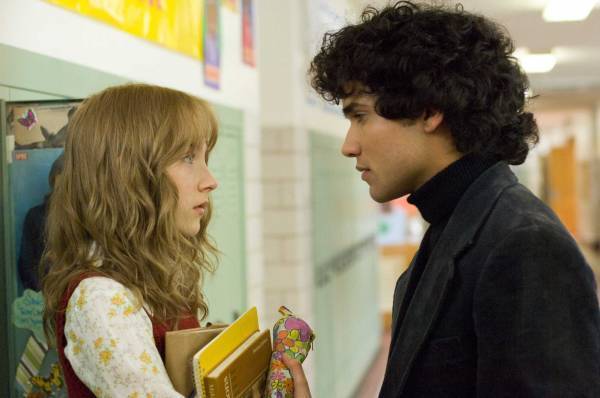Here is my review
THE LOVELY BONES
Directed by Peter Jackson (2009)
Peter Jackson's The Lovely Bones is a tribute to youthful innocence and the resilience of a family in the face of unspeakable tragedy. Based on the best-selling 2002 novel of the same name by Alice Sebold, the film is set in suburban Pennsylvania during the 1970s, recapturing a time of relative sanity in society when people, exhausted by the political activism of the 60s, began to look inward to gain insight into their true nature. Susie Salmon, a 14-year old girl, enchantingly performed by Saoirse Ronan ("Atonement"), is supported by a devoted family, has a talent for photography, and a crush on an Indian student Ray whom she desperately wants to kiss her.
All this comes to a premature end, however, when she is lured to an underground bunker and murdered by sullen neighbor George Harvey (Stanley Tucci) when crossing a cornfield on the way home from school, ending all her dreams of love, children, and career in a brutal instant. As what many mediums and psychics call a disembodied spirit, a traumatized soul who cannot let go and move on, Susie narrates the film from a sort of limbo somewhere south of heaven, relating key occurrences of her childhood and the happy days she spent growing up.
Sadly, she also recounts the events that led to her death in excruciating detail as the camera dramatizes her words on the screen. Now seeking revenge for her murder, she reaches out to her family from beyond the grave, leaving clues pointing to Harvey as the killer, and stealing a kiss from her wannabe boyfriend Ray Singh (Reece Ritchie).
Although the film is particularly skimpy on the relationship between Susie's dad Jack (Mark Wahlberg) and her mother Abigail (Rachel Weisz) and the reason for their breakup, it is solid on several important levels: the trauma of sudden death and the impact it has on a family, the struggle to move on versus the need to get even, and the continuance of life after death. Performances are outstanding, especially that of young Ronan who is sweet, innocent, full of life, and a charismatic presence. Equally powerful are the performances of Tucci as the serial killer who is the poster boy for the banality of evil, Wahlberg as the intense father who obsessively seeks the identity of his daughter's killer while criticizing the detective, Len Fenerman (Michael Imperioli) for not doing more to solve the case.
Also strong is the reliable Rachel Weisz, Susie's depressed mother who seeks to block the tragedy from her mind by leaving home to pick fruit in California, Rose McIver as Susie's sister Lindsey, an athletic middle school student, and Susan Sarandon as Susie's boozy grandmother who takes control of the household when things begin to fall apart. Unfortunately, the characters are paper-thin constructs that have no life outside of their limited role in forwarding the script.
The film has been criticized as well for its over-reliance on CGI effects to depict a colorful, surreal afterlife filled with eye-popping images of bright colorful skies, mountains, and waters where people actually seem to be happy. Jackson's afterworld, however, in my view, is not meant to objectify the hereafter but simply to model Susie's subjective dreamscape, mirroring her purity and innocence as well as her loneliness and agitation in completing her unfinished business on Earth.
Though "The Lovely Bones" has scenes of incredible beauty, it also has moments of brutal violence and a theme of hate-filled revenge that undercuts its message of redemption. Although it does convey the timeless quality of the human spirit, its journey and its purpose with delicacy and intelligence, the film falls short of being a truly magical experience because it does not consider the role of forgiveness and love as an important element in healing, yes even for those who do harm. It is nonetheless a work of sincerity and passion, guided by a director who is willing to take chances to say something meaningful beyond the typical Hollywood product and one who largely succeeds in touching our heart.
GRADE: B+
"They must find it hard, those who have taken authority as truth, rather than truth as authority" Gerald Massey





 Reply With Quote
Reply With Quote
Bookmarks